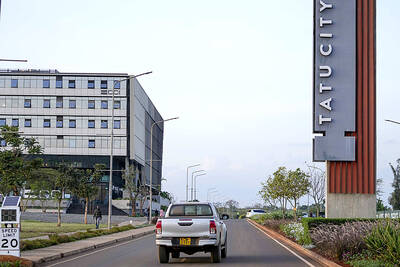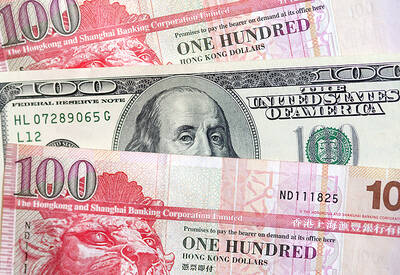Household disposable income last year averaged NT$1.09 million (US$35,014), rising 1 percent from 2020, while median household disposable income edged up 0.1 percent to NT$929,000, the Directorate-General of Budget, Accounting and Statistics (DGBAS) said on Wednesday.
Average disposable per capita income advanced 2.1 percent to NT$377,000, while median per capita income gained 1.8 percent to NT$326,000, the agency said.
Average household income is used to help gauge the monetary well-being of a country’s citizens. Median household incomes are taken as indicators of standard of living because they include only disposable income and acknowledge that people sharing accommodation benefit from pooling at least some of their living costs.
Taipei led other special municipalities in household disposable income at NT$1.43 million, followed by Taoyuan, New Taipei City, Taichung, Kaohsiung and Tainan, the agency said.
However, people spent less for two consecutive years, as most stayed home to avoid infection during COVID-19 outbreaks.
Disease control measures also affected social gatherings and recreational activities, the DGBAS said.
INCOME GAP
The income gap last year rose to 6.15 times, a 10-year high, as the rich benefited from capital gains, another DGBAS survey showed.
The income difference for 2020 stood at 6.13 times, it said.
The liquidity-driven rallies across global financial markets last year significantly inflated asset prices for the wealthy.
However, the widening gap should not be linked to the COVID-19 pandemic as the government introduced waves of relief measures and subsidy programs to support affected people and businesses, the agency said.
The income of the top 1 percent in Taiwan accounted for a relatively low percentage of overall income compared with other countries, it added.

To many, Tatu City on the outskirts of Nairobi looks like a success. The first city entirely built by a private company to be operational in east Africa, with about 25,000 people living and working there, it accounts for about two-thirds of all foreign investment in Kenya. Its low-tax status has attracted more than 100 businesses including Heineken, coffee brand Dormans, and the biggest call-center and cold-chain transport firms in the region. However, to some local politicians, Tatu City has looked more like a target for extortion. A parade of governors have demanded land worth millions of dollars in exchange

Hong Kong authorities ramped up sales of the local dollar as the greenback’s slide threatened the foreign-exchange peg. The Hong Kong Monetary Authority (HKMA) sold a record HK$60.5 billion (US$7.8 billion) of the city’s currency, according to an alert sent on its Bloomberg page yesterday in Asia, after it tested the upper end of its trading band. That added to the HK$56.1 billion of sales versus the greenback since Friday. The rapid intervention signals efforts from the city’s authorities to limit the local currency’s moves within its HK$7.75 to HK$7.85 per US dollar trading band. Heavy sales of the local dollar by

Taiwan Semiconductor Manufacturing Co’s (TSMC, 台積電) revenue jumped 48 percent last month, underscoring how electronics firms scrambled to acquire essential components before global tariffs took effect. The main chipmaker for Apple Inc and Nvidia Corp reported monthly sales of NT$349.6 billion (US$11.6 billion). That compares with the average analysts’ estimate for a 38 percent rise in second-quarter revenue. US President Donald Trump’s trade war is prompting economists to retool GDP forecasts worldwide, casting doubt over the outlook for everything from iPhone demand to computing and datacenter construction. However, TSMC — a barometer for global tech spending given its central role in the

An Indonesian animated movie is smashing regional box office records and could be set for wider success as it prepares to open beyond the Southeast Asian archipelago’s silver screens. Jumbo — a film based on the adventures of main character, Don, a large orphaned Indonesian boy facing bullying at school — last month became the highest-grossing Southeast Asian animated film, raking in more than US$8 million. Released at the end of March to coincide with the Eid holidays after the Islamic fasting month of Ramadan, the movie has hit 8 million ticket sales, the third-highest in Indonesian cinema history, Film